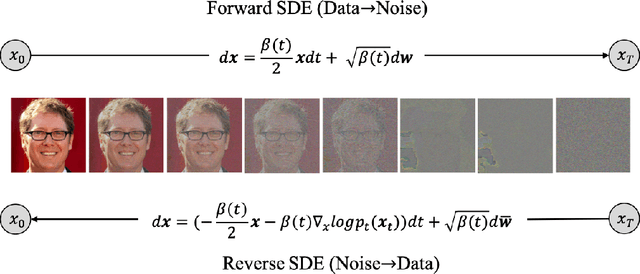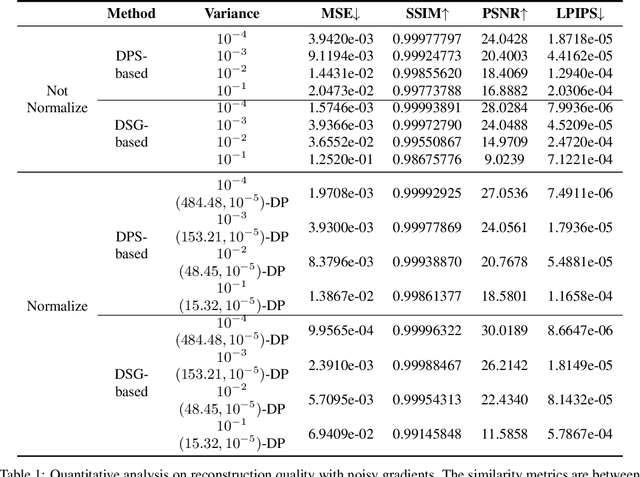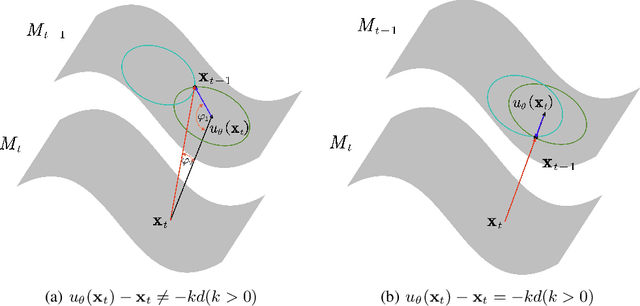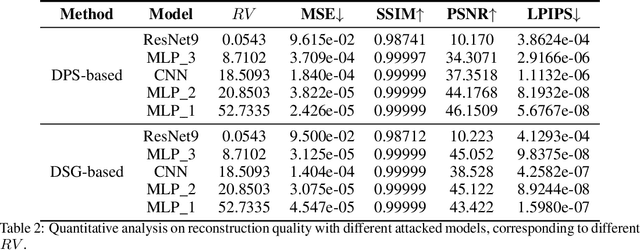Hua Wang
ABG-NAS: Adaptive Bayesian Genetic Neural Architecture Search for Graph Representation Learning
Apr 30, 2025Abstract:Effective and efficient graph representation learning is essential for enabling critical downstream tasks, such as node classification, link prediction, and subgraph search. However, existing graph neural network (GNN) architectures often struggle to adapt to diverse and complex graph structures, limiting their ability to provide robust and generalizable representations. To address this challenge, we propose ABG-NAS, a novel framework for automated graph neural network architecture search tailored for efficient graph representation learning. ABG-NAS encompasses three key components: a Comprehensive Architecture Search Space (CASS), an Adaptive Genetic Optimization Strategy (AGOS), and a Bayesian-Guided Tuning Module (BGTM). CASS systematically explores diverse propagation (P) and transformation (T) operations, enabling the discovery of GNN architectures capable of capturing intricate graph characteristics. AGOS dynamically balances exploration and exploitation, ensuring search efficiency and preserving solution diversity. BGTM further optimizes hyperparameters periodically, enhancing the scalability and robustness of the resulting architectures. Empirical evaluations on benchmark datasets (Cora, PubMed, Citeseer, and CoraFull) demonstrate that ABG-NAS consistently outperforms both manually designed GNNs and state-of-the-art neural architecture search (NAS) methods. These results highlight the potential of ABG-NAS to advance graph representation learning by providing scalable and adaptive solutions for diverse graph structures. Our code is publicly available at https://github.com/sserranw/ABG-NAS.
DeskVision: Large Scale Desktop Region Captioning for Advanced GUI Agents
Mar 14, 2025Abstract:The limitation of graphical user interface (GUI) data has been a significant barrier to the development of GUI agents today, especially for the desktop / computer use scenarios. To address this, we propose an automated GUI data generation pipeline, AutoCaptioner, which generates data with rich descriptions while minimizing human effort. Using AutoCaptioner, we created a novel large-scale desktop GUI dataset, DeskVision, along with the largest desktop test benchmark, DeskVision-Eval, which reflects daily usage and covers diverse systems and UI elements, each with rich descriptions. With DeskVision, we train a new GUI understanding model, GUIExplorer. Results show that GUIExplorer achieves state-of-the-art (SOTA) performance in understanding/grounding visual elements without the need for complex architectural designs. We further validated the effectiveness of the DeskVision dataset through ablation studies on various large visual language models (LVLMs). We believe that AutoCaptioner and DeskVision will significantly advance the development of GUI agents, and will open-source them for the community.
SEKI: Self-Evolution and Knowledge Inspiration based Neural Architecture Search via Large Language Models
Feb 27, 2025Abstract:We introduce SEKI, a novel large language model (LLM)-based neural architecture search (NAS) method. Inspired by the chain-of-thought (CoT) paradigm in modern LLMs, SEKI operates in two key stages: self-evolution and knowledge distillation. In the self-evolution stage, LLMs initially lack sufficient reference examples, so we implement an iterative refinement mechanism that enhances architectures based on performance feedback. Over time, this process accumulates a repository of high-performance architectures. In the knowledge distillation stage, LLMs analyze common patterns among these architectures to generate new, optimized designs. Combining these two stages, SEKI greatly leverages the capacity of LLMs on NAS and without requiring any domain-specific data. Experimental results show that SEKI achieves state-of-the-art (SOTA) performance across various datasets and search spaces while requiring only 0.05 GPU-days, outperforming existing methods in both efficiency and accuracy. Furthermore, SEKI demonstrates strong generalization capabilities, achieving SOTA-competitive results across multiple tasks.
Transfer Learning Assisted Fast Design Migration Over Technology Nodes: A Study on Transformer Matching Network
Feb 25, 2025Abstract:In this study, we introduce an innovative methodology for the design of mm-Wave passive networks that leverages knowledge transfer from a pre-trained synthesis neural network (NN) model in one technology node and achieves swift and reliable design adaptation across different integrated circuit (IC) technologies, operating frequencies, and metal options. We prove this concept through simulation-based demonstrations focusing on the training and comparison of the coefficient of determination (R2) of synthesis NNs for 1:1 on-chip transformers in GlobalFoundries(GF) 22nm FDX+ (target domain), with and without transfer learning from a model trained in GF 45nm SOI (source domain). In the experiments, we explore varying target data densities of 0.5%, 1%, 5%, and 100% with a complete dataset of 0.33 million in GF 22FDX+, and for comparative analysis, apply source data densities of 25%, 50%, 75%, and 100% with a complete dataset of 2.5 million in GF 45SOI. With the source data only at 30GHz, the experiments span target data from two metal options in GF 22FDX+ at frequencies of 30 and 39 GHz. The results prove that the transfer learning with the source domain knowledge (GF 45SOI) can both accelerate the training process in the target domain (GF 22FDX+) and improve the R2 values compared to models without knowledge transfer. Furthermore, it is observed that a model trained with just 5% of target data and augmented by transfer learning achieves R2 values superior to a model trained with 20% of the data without transfer, validating the advantage seen from 1% to 5% data density. This demonstrates a notable reduction of 4X in the necessary dataset size highlighting the efficacy of utilizing transfer learning to mm-Wave passive network design. The PyTorch learning and testing code is publicly available at https://github.com/ChenhaoChu/RFIC-TL.
Round Attention: A Novel Round-Level Attention Mechanism to Accelerate LLM Inference
Feb 21, 2025Abstract:The increasing context window size in large language models (LLMs) has improved their ability to handle complex, long-text tasks. However, as the conversation rounds continue, it is required to store a large amount of KV cache in GPU memory, which significantly affects the efficiency and even availability of the model serving systems. This paper analyzes dialogue data from real users and discovers that the LLM inference manifests a watershed layer, after which the distribution of round-level attention shows notable similarity. We propose Round Attention, a novel round-level attention mechanism that only recalls and computes the KV cache of the most relevant rounds. The experiments show that our method saves 55\% memory usage without compromising model performance.
Gradient-Guided Conditional Diffusion Models for Private Image Reconstruction: Analyzing Adversarial Impacts of Differential Privacy and Denoising
Nov 05, 2024



Abstract:We investigate the construction of gradient-guided conditional diffusion models for reconstructing private images, focusing on the adversarial interplay between differential privacy noise and the denoising capabilities of diffusion models. While current gradient-based reconstruction methods struggle with high-resolution images due to computational complexity and prior knowledge requirements, we propose two novel methods that require minimal modifications to the diffusion model's generation process and eliminate the need for prior knowledge. Our approach leverages the strong image generation capabilities of diffusion models to reconstruct private images starting from randomly generated noise, even when a small amount of differentially private noise has been added to the gradients. We also conduct a comprehensive theoretical analysis of the impact of differential privacy noise on the quality of reconstructed images, revealing the relationship among noise magnitude, the architecture of attacked models, and the attacker's reconstruction capability. Additionally, extensive experiments validate the effectiveness of our proposed methods and the accuracy of our theoretical findings, suggesting new directions for privacy risk auditing using conditional diffusion models.
TurboRAG: Accelerating Retrieval-Augmented Generation with Precomputed KV Caches for Chunked Text
Oct 10, 2024



Abstract:Current Retrieval-Augmented Generation (RAG) systems concatenate and process numerous retrieved document chunks for prefill which requires a large volume of computation, therefore leading to significant latency in time-to-first-token (TTFT). To reduce the computation overhead as well as TTFT, we introduce TurboRAG, a novel RAG system that redesigns the inference paradigm of the current RAG system by first pre-computing and storing the key-value (KV) caches of documents offline, and then directly retrieving the saved KV cache for prefill. Hence, online computation of KV caches is eliminated during inference. In addition, we provide a number of insights into the mask matrix and positional embedding mechanisms, plus fine-tune a pretrained language model to maintain model accuracy of TurboRAG. Our approach is applicable to most existing large language models and their applications without any requirement in modification of models and inference systems. Experimental results across a suite of RAG benchmarks demonstrate that TurboRAG reduces TTFT by up to 9.4x compared to the conventional RAG systems (on an average of 8.6x), but reserving comparable performance to the standard RAG systems.
MooER: LLM-based Speech Recognition and Translation Models from Moore Threads
Aug 09, 2024Abstract:In this paper, we present MooER, a LLM-based large-scale automatic speech recognition (ASR) / automatic speech translation (AST) model of Moore Threads. A 5000h pseudo labeled dataset containing open source and self collected speech data is used for training. We achieve performance comparable to other open source models trained with up to hundreds of thousands of hours of labeled speech data. Meanwhile, experiments conducted on Covost2 Zh2en testset suggest that our model outperforms other open source Speech LLMs. A BLEU score of 25.2 can be obtained. The main contributions of this paper are summarized as follows. First, this paper presents a training strategy for encoders and LLMs on speech related tasks (including ASR and AST) using a small size of pseudo labeled data without any extra manual annotation and selection. Second, we release our ASR and AST models and plan to open-source our training code and strategy in the near future. Moreover, a model trained on 8wh scale training data is planned to be released later on.
A Survey of Distance-Based Vessel Trajectory Clustering: Data Pre-processing, Methodologies, Applications, and Experimental Evaluation
Jul 13, 2024Abstract:Vessel trajectory clustering, a crucial component of the maritime intelligent transportation systems, provides valuable insights for applications such as anomaly detection and trajectory prediction. This paper presents a comprehensive survey of the most prevalent distance-based vessel trajectory clustering methods, which encompass two main steps: trajectory similarity measurement and clustering. Initially, we conducted a thorough literature review using relevant keywords to gather and summarize pertinent research papers and datasets. Then, this paper discussed the principal methods of data pre-processing that prepare data for further analysis. The survey progresses to detail the leading algorithms for measuring vessel trajectory similarity and the main clustering techniques used in the field today. Furthermore, the various applications of trajectory clustering within the maritime context are explored. Finally, the paper evaluates the effectiveness of different algorithm combinations and pre-processing methods through experimental analysis, focusing on their impact on the performance of distance-based trajectory clustering algorithms. The experimental results demonstrate the effectiveness of various trajectory clustering algorithms and notably highlight the significant improvements that trajectory compression techniques contribute to the efficiency and accuracy of trajectory clustering. This comprehensive approach ensures a deep understanding of current capabilities and future directions in vessel trajectory clustering.
Improving Large Models with Small models: Lower Costs and Better Performance
Jun 15, 2024Abstract:Pretrained large models (PLMs), such as ChatGPT, have demonstrated remarkable performance across diverse tasks. However, the significant computational requirements of PLMs have discouraged most product teams from running or fine-tuning them. In such cases, to harness the exceptional performance of PLMs, one must rely on expensive APIs, thereby exacerbating the economic burden. Despite the overall inferior performance of small models, in specific distributions, they can achieve comparable or even superior results. Consequently, some input can be processed exclusively by small models. On the other hand, certain tasks can be broken down into multiple subtasks, some of which can be completed without powerful capabilities. Under these circumstances, small models can handle the simple subtasks, allowing large models to focus on challenging subtasks, thus improving the performance. We propose Data Shunt$^+$ (DS$^+$), a general paradigm for collaboration of small and large models. DS$^+$ not only substantially reduces the cost associated with querying large models but also effectively improves large models' performance. For instance, ChatGPT achieves an accuracy of $94.43\%$ on Amazon Product sentiment analysis, and DS$^+$ achieves an accuracy of $95.64\%$, while the cost has been reduced to only $31.18\%$. Besides, experiments also prove that the proposed collaborative-based paradigm can better inject specific task knowledge into PLMs compared to fine-tuning.
 Add to Chrome
Add to Chrome Add to Firefox
Add to Firefox Add to Edge
Add to Edge